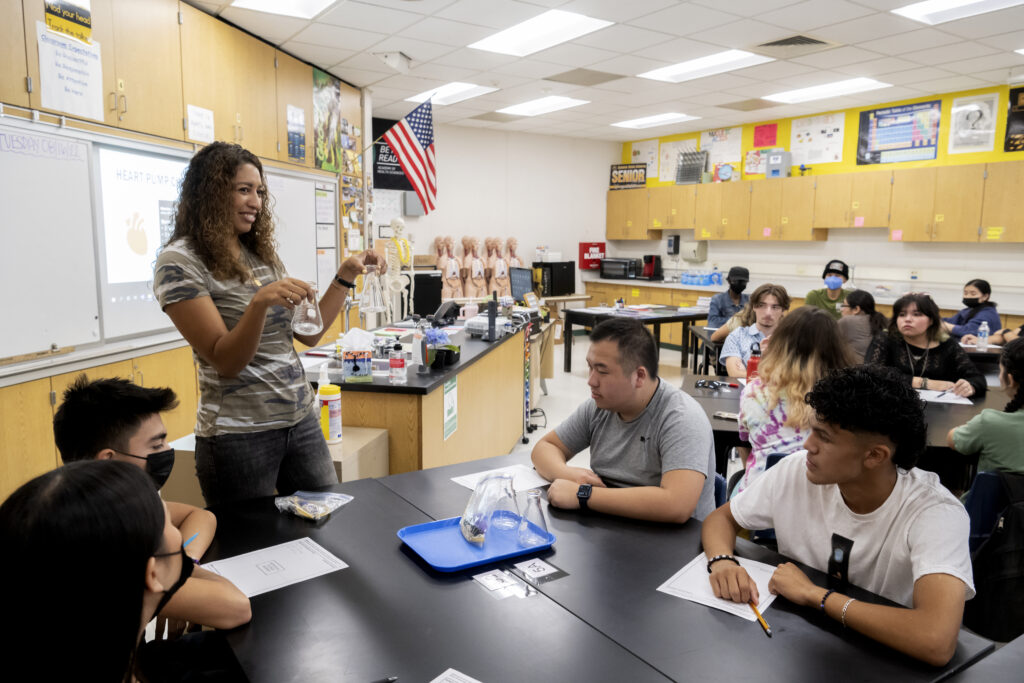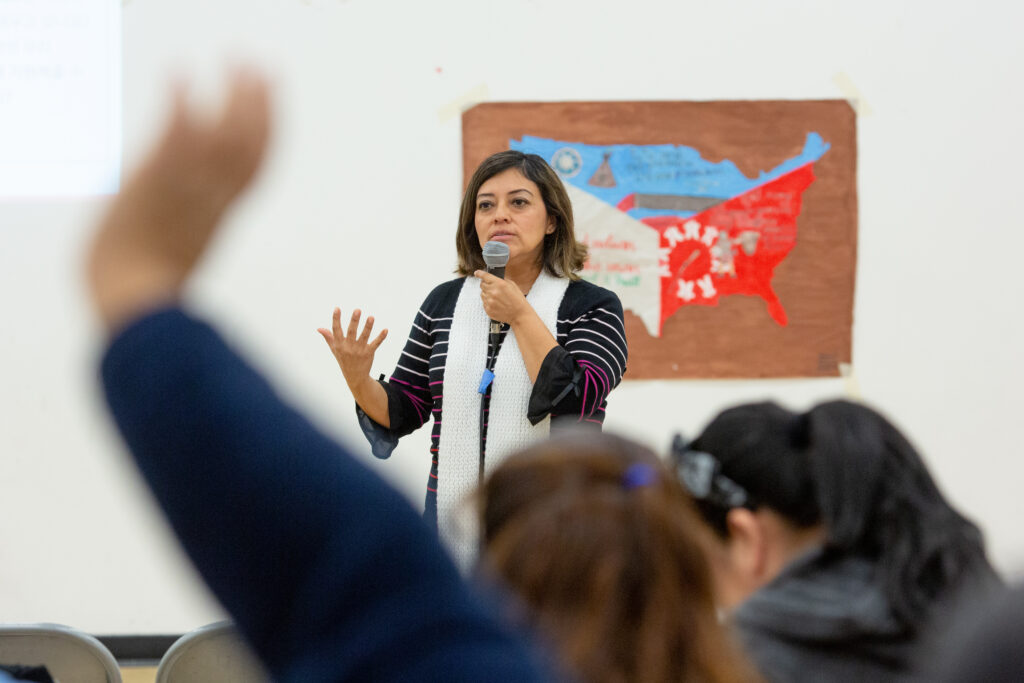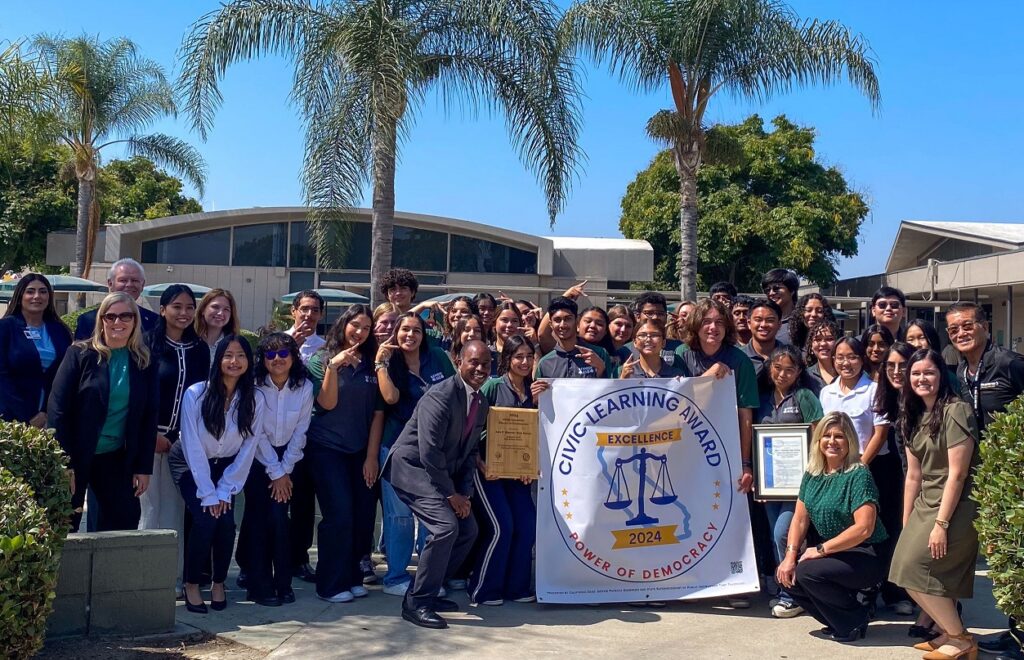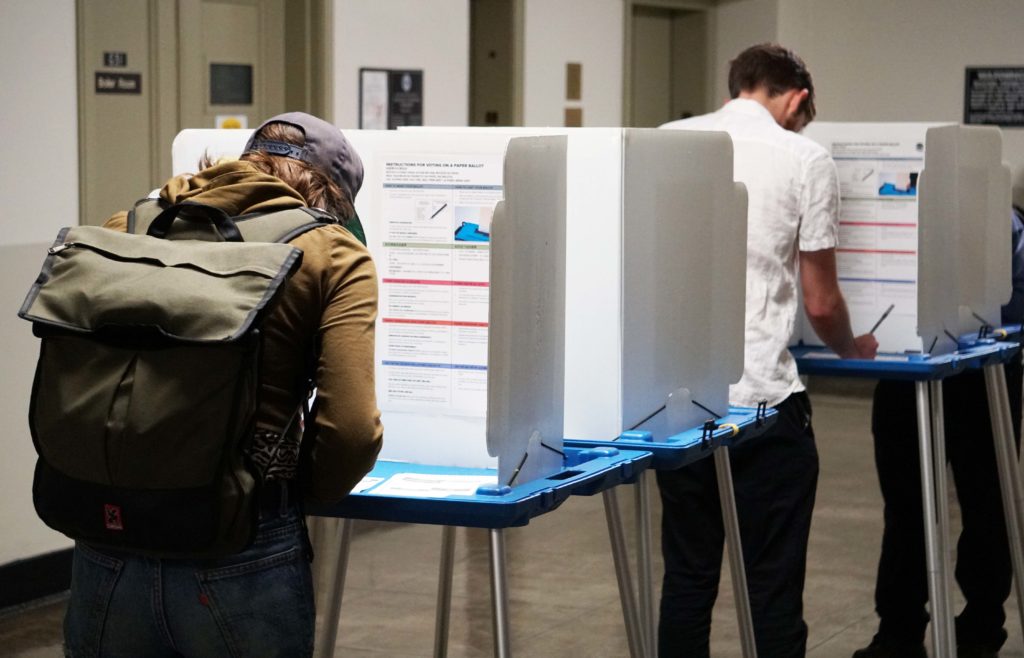
Students at Edison High School in Fresno.
Credit: Fresno Unified / Flickr
California’s Commission on Teacher Credentialing approved long-awaited revised Standards for the Teaching Profession on Thursday that emphasize culturally responsive teaching, social-emotional learning and family engagement.
The standards, which guide teachers’ professional development and evaluation statewide, broadly describe the knowledge, skills and abilities expected of effective experienced teachers. State law requires that they are updated regularly.
During the meeting Thursday, the overwhelming sentiment — from commissioners members, speakers from the public, and the letters received — supported the new standards; however, some asked the commission to push back the 2025-26 rollout of the new standards to allow university teacher preparation programs, school districts and commission staff more time to implement changes.
“The revised CSTP aims to rehumanize our system by focusing on the whole student, their identities and what’s meaningful in this world to them, not us,” said Leigh Dela Victoria, an instructional coach in the Fontana Unified School District in San Bernardino County.
“They have the potential to transform all of our classrooms into culturally and linguistically responsive and sustaining communities,” she said. “As a coach, I can tell you firsthand the impact this type of teaching has on students when their identities, assets and agency are valued.”
She told commission members that the current standards, approved in 2009, are out of touch with what needs to be taught in classrooms.
The six overarching domains of teaching in the new document are similar to the previous standards, and are parallel to other state standards, according to the commission. The elements within the domains include definitions and examples. The six domains are also used in the Teaching Performance Expectations, which outline what beginning teachers should know.
Going Deeper
Domain 1: Engaging and supporting all students in learning – Teachers apply knowledge about each student to activate an approach to learning that strengthens and reinforces each student’s participation, engagement, connection and sense of belonging.
Domain 2: Creating and maintaining effective environments for student learning – Teachers create and uphold a safe, caring and intellectually stimulating learning environment that affirms student agency, voice, identity and development, and promotes equity and inclusivity.
Domain 3: Understanding and organizing subject matter for student learning – Teachers integrate content, processes, materials and resources into a coherent, culturally relevant and equitable curriculum that engages and challenges learners to develop the academic and social–emotional knowledge and skills required to become competent and resourceful learners.
Domain 4: Planning instruction and designing learning experiences for all students – Teachers set a purposeful direction for instruction and learning activities, intentionally planning and enacting challenging and relevant learning experiences that foster each student’s academic and social–emotional development.
Domain 5: Assessing students for learning – Teachers employ equitable assessment practices to help identify students’ interests and abilities, to reveal what students know and can do and to determine what they need to learn. Teachers use that information to advance and monitor student progress as well as to guide teachers’ and students’ actions to improve learning experiences and outcomes.
Domain 6: Developing as a professional educator – Teachers develop as effective and caring professional educators by engaging in relevant and high-quality professional learning experiences that increase their teaching capacity, leadership development and personal well-being. Doing so enables teachers to support each student to learn and thrive.
“The revised CSTP features several key shifts from the 2009 version, chief among them a more holistic approach to teaching and learning,” said Sarah Lillis, executive director for Teach Plus California, in a letter. “For example, the move from goal setting to designing learning experiences shifts the focus from results to students’ learning. Another notable shift is recognizing that all teachers, regardless of subject-specific credential areas, are teachers of literacy skills.”
Family engagement is a key element of new standards
The new standards also focus on family and community engagement, requiring teachers to find effective strategies for communicating and creating relationships with families.
“These standards provide an invaluable road map that will undoubtedly strengthen how teachers, schools and communities partner with families,” said Bryan Becker, of the Parent Organization Network.
Also new to the standards are two sections, one asking teachers to examine their personal attitudes and biases, and how these impact student learning, and the other asking them to reflect on their personal code of ethics.
After speakers expressed concern about the few references to English learners and students with disabilities in the document, Chair Marquita Grenot-Scheyer made a motion to approve the standards with amendments that would “shine a brighter spotlight” on those students.
She also asked that the amendment include direction to ensure teachers attend individualized education plan meetings. School staff and parents attend these meetings to review the education plan of students with special needs.
Revision put on hold for two years
According to the commission, the revision was a long time in coming. Originally adopted in the 1990s, the standards were most recently updated in 2009. An expert group of educators, administrators, researchers and state education staff came together in 2020 to update the standards. The group met online five times between June 2020 and May 2021, but work was paused a few months later “as Covid and other critical world events demanded pause and reflection.”
Over the past two years, the commission has been focused on other state initiatives that would impact the new standards, including the new PK-3 Early Childhood Specialist Instruction Credential and the implementation of revised literacy standards and literacy-related teaching performance expectations mandated by legislation. Members of the expert group returned in 2023 to review and finalize the document.
Board denies pleas for delay
The commission voted for the newly revised standards to go into effect in the 2025-26 school year, despite numerous requests by speakers to extend the rollout to give teacher preparation and induction programs and the commission staff more time to prepare for them.
Grenot-Scheyer also directed commission staff to develop an implementation plan that will support school districts and teacher preparation programs during the transition.
Audry Wiens, induction coordinator for Fontana Unified, was among those who asked the commission to delay the implementation of the standards for a year. She said programs would need to come to a common understanding of the shifts that need to take place, revise relevant documents, train mentors in induction programs and update accreditation websites.
Some wanted the standards implemented as soon as possible.
“I am not an induction program provider, but it really causes me pause to extend any sort of timelines, because we have got things to do here,” said Commissioner Megan Gross. “… I want us to capitalize on this sense of urgency that we have to do better for our kids.”





